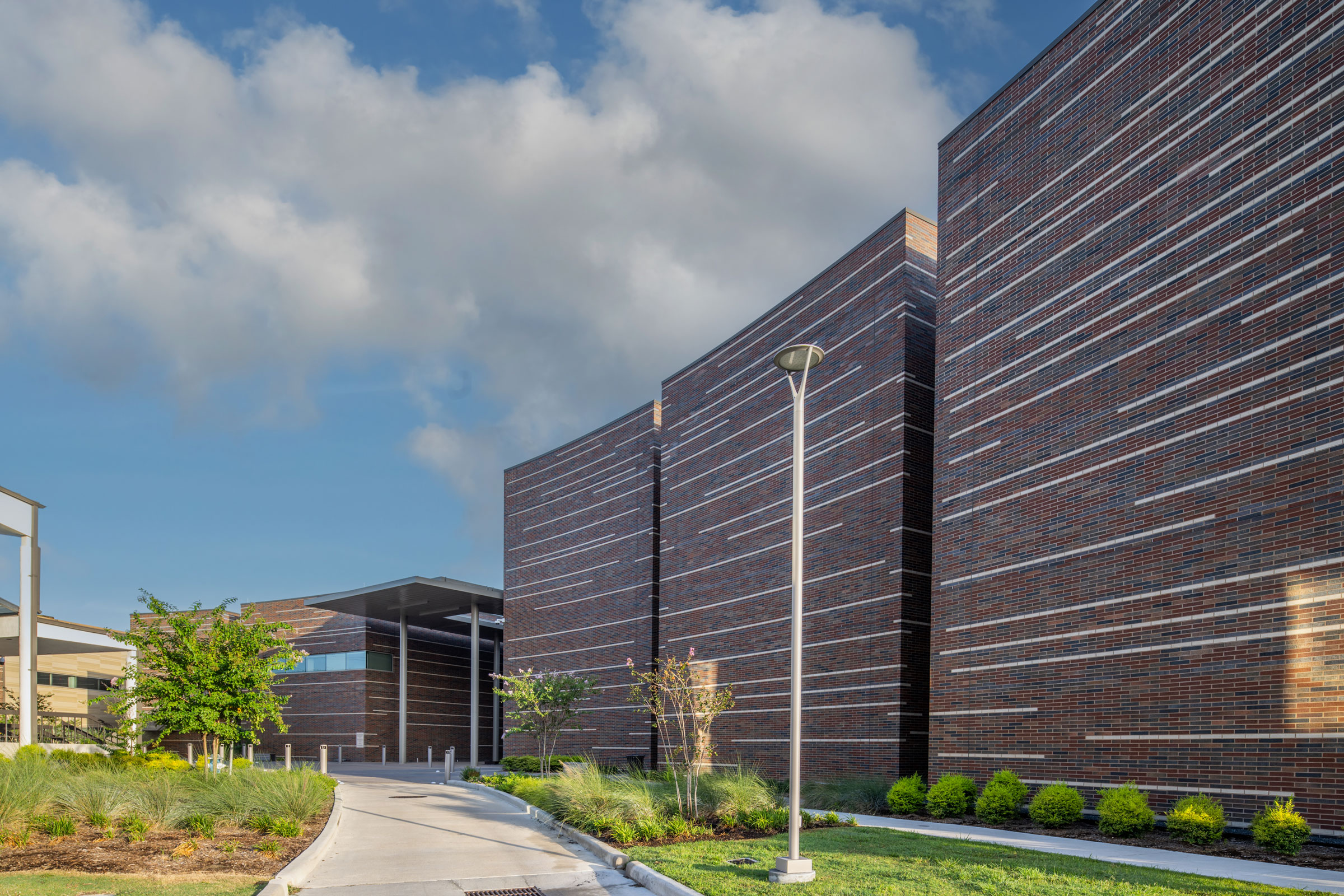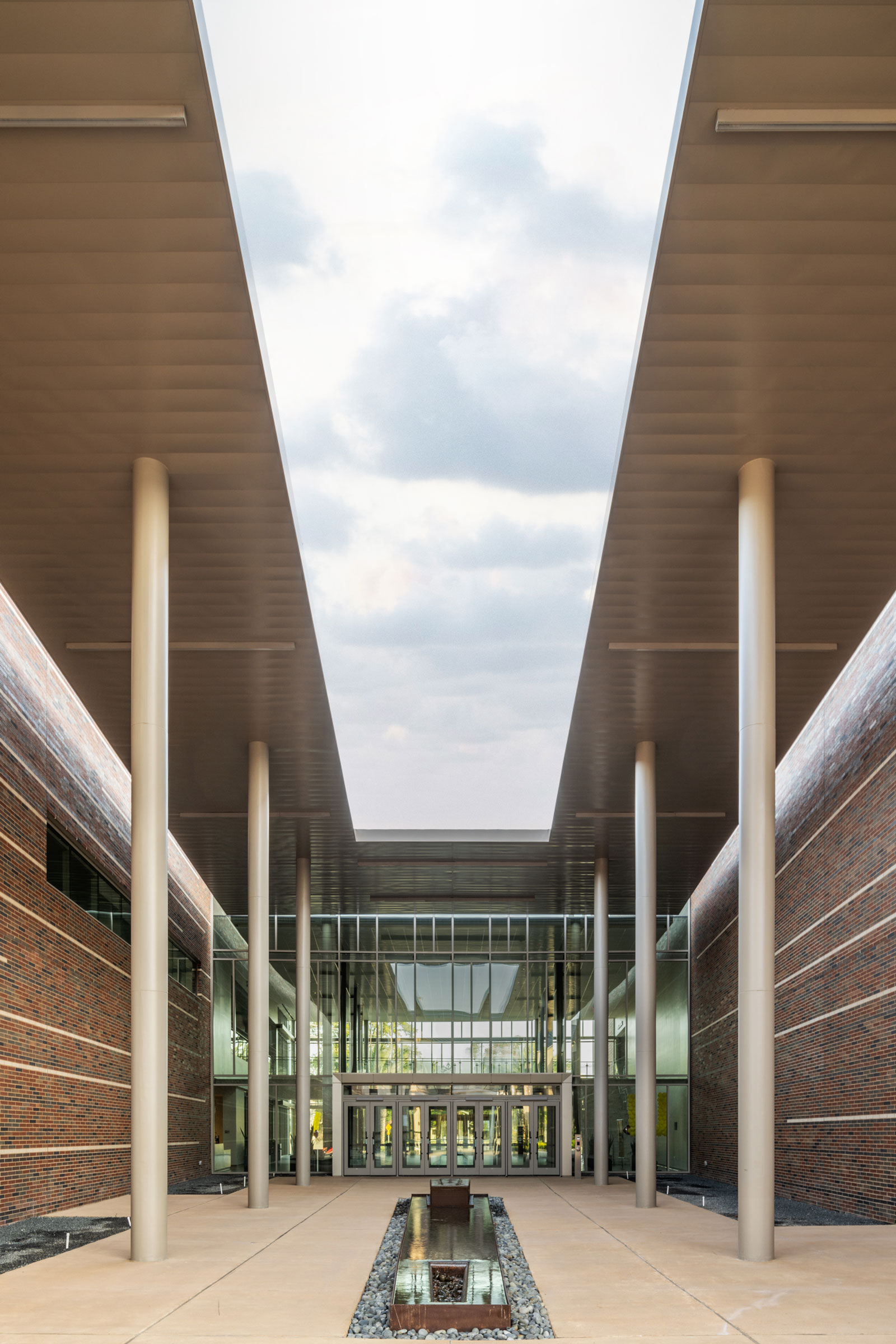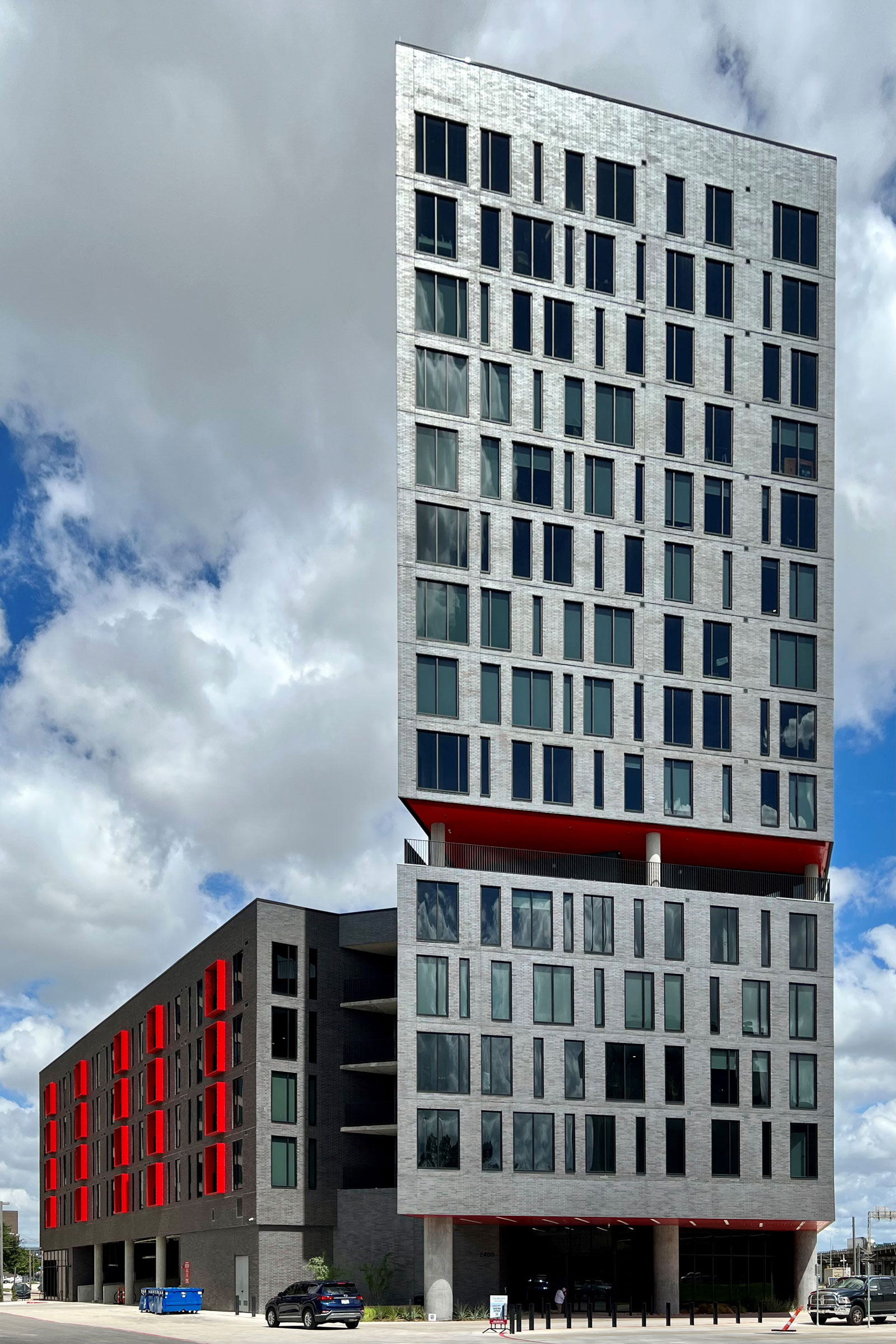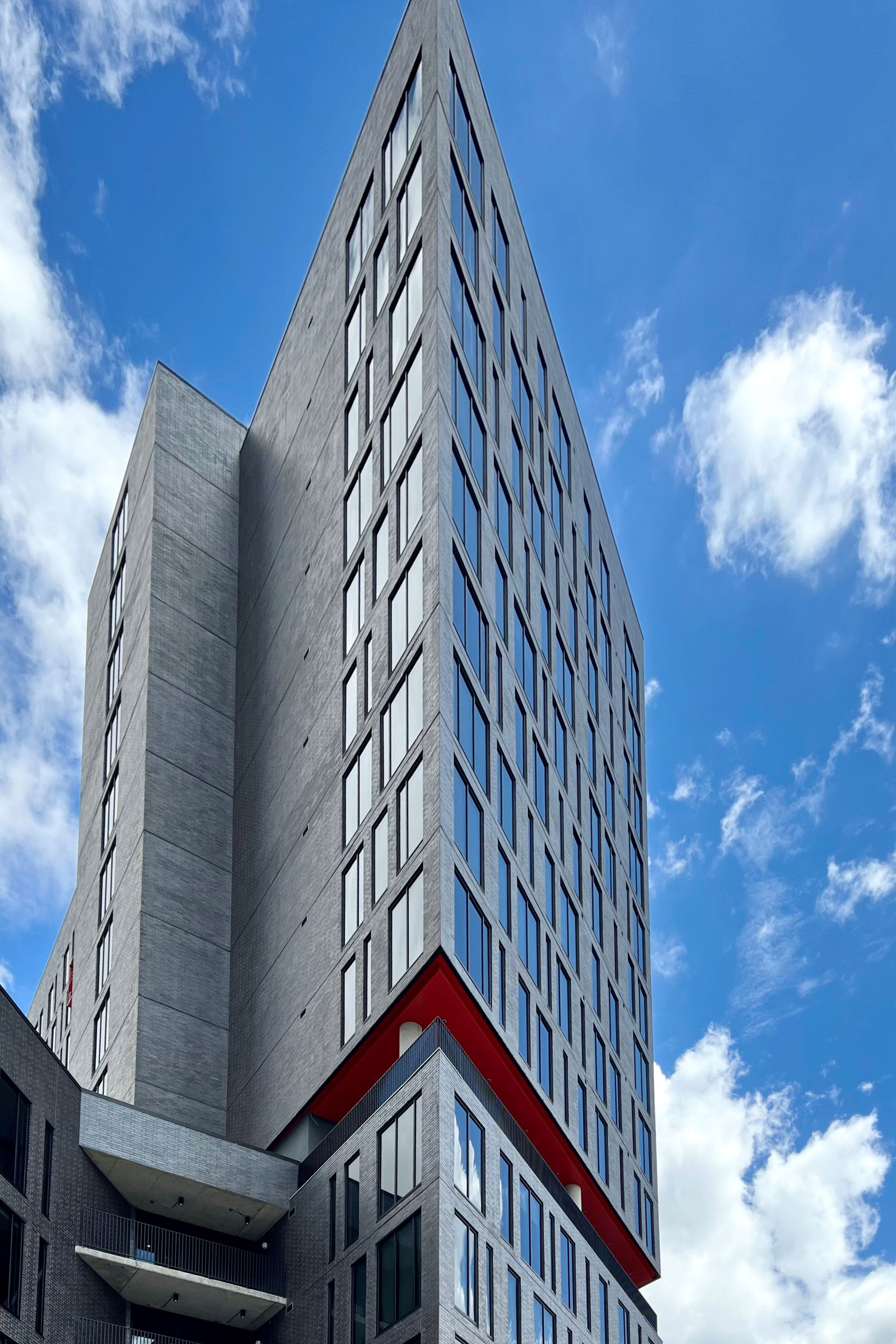Story at a glance:
- How an age-old material continues to evolve to meet modern demands
- Top architects at Perkins&Will share some of their favorite brick projects.
- Acme Brick has been manufacturing innovative solutions for more than 100 years.
Robert Ting is looking at brick. Quite literally, it surrounds him. There’s a lot of brick in this region where Ting works as design principal for the Perkins&Will Dallas office, itself in a historic brick building—formerly one of the city’s oldest high schools. Ting says brick is both plentiful and durable, and it also provides architects with serious design flexibility.
Perkins&Will often uses brick in its projects because of its diverse design capabilities, Ting says. While technically the material itself hasn’t changed much, the technology surrounding its capabilities have—and how it’s being used has, too.
Architects today have access to even more colors, shapes, and sizes of brick, for example. “In the beginning brick was crafted by hand and installed one by one by hand, but with the new technology brick has evolved into endless possibilities of shapes, thickness, textures, and colors. Brick can now be installed as a component of a prefabricated building cladding system to further explore the opportunities for texture and rhythm,” Ting says.
We explore the benefits of brick and how the material is changing—with expertise from both architects and manufacturers.
Color
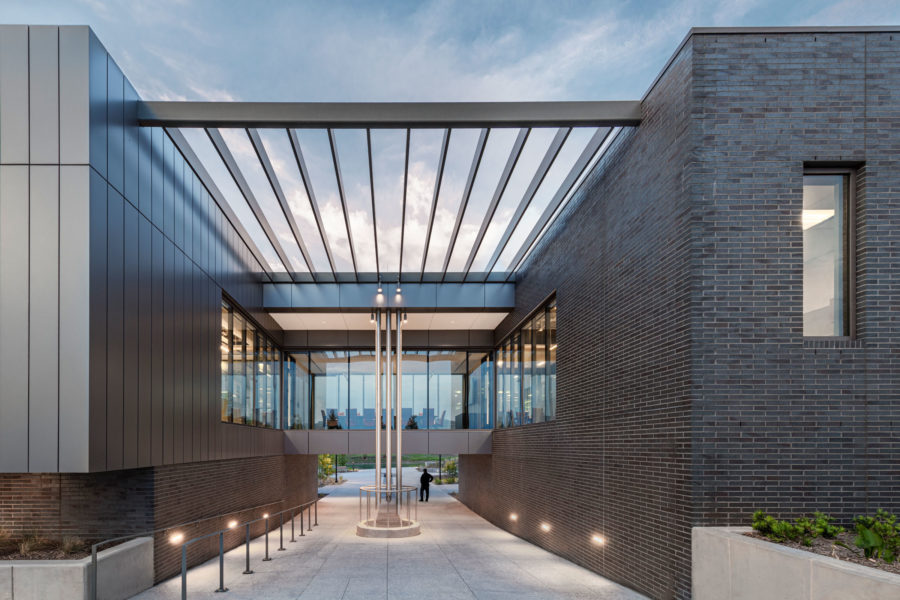
The Princeton Municipal Center, in a fast-growing Dallas suburb, uses dark brick for a contemporary look. Photo by James Steinkamp
“You can pull modern design out of brick, in part depending on what colors you want to use. We’re seeing a lot of whites and light grays accented with pure, stark black colors. That’s been popular,” says Stan McCarthy, senior vice president of sales at Acme Brick, a Texas-based brick manufacturer for more than 100 years.
Modern brick can be custom-made to meet virtually any shape or color. Using programs like Grasshopper and Rhino, architects can play with placement of brick around a building and create texture. “When you treat brick as a pixel, you can tweak and articulate the building envelope to convey the design idea,” Ting says.
Wheeler Avenue Baptist Church in Houston uses a mix of colors, including both white and black brick, in its design by Perkins&Will. “It’s a beautifully designed project with a great deal of brick,” McCarthy says. For that project Acme Brick worked with its Tulsa and Perla plants, plus an affiliate brick plant in Lincoln, Nebraska, to achieve a special blend of brick for an added level of detail on the building. That project incorporated several colors and was designed to give the illusion of movement, McCarthy says.
Size
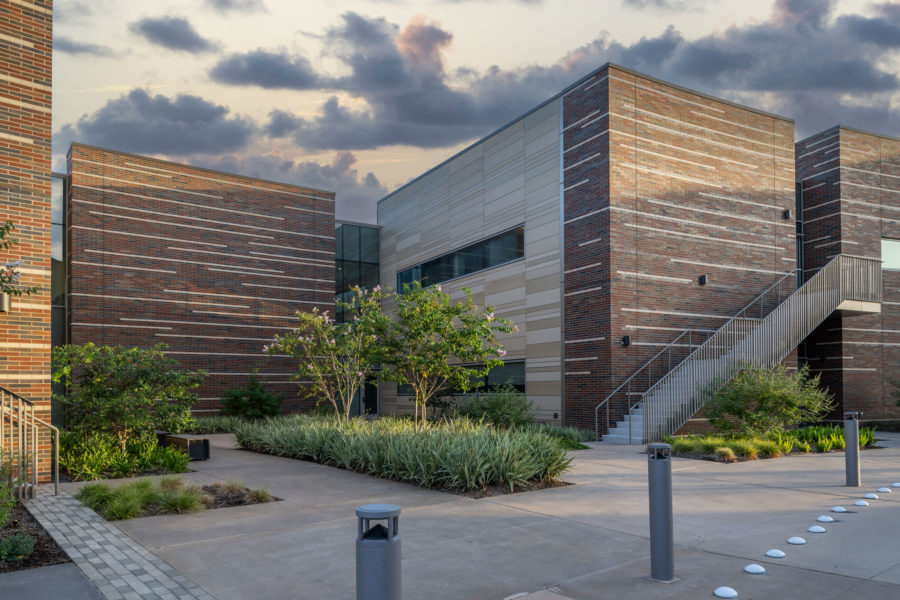
Acme Brick worked with its Tulsa and Perla plants, plus an affiliate brick plant in Lincoln, Nebraska, to achieve a special blend of brick for an added level of detail on the Wheeler Avenue Baptist Church. Photo courtesy of Acme Brick
The Wheeler Avenue church project also uses longer bricks for added curb appeal.
“We’re seeing more requests for what I would call the elongated (linear) looking—units that are as much as 16 to 22 inches long,” McCarthy says.
McCarthy says the standard size brick used (modular) is two-and-a-quarter inches high by seven-and-five-eighths inches long, but he sees requests for many heights and lengths these days. “We can offer a variety of different lengths and heights that architects can then design with. It gives them more design (aesthetic) capabilities.” The variability allows design teams to try different things.
Acme has continued to see requests evolve over the years. “We go through phases of what architects choose to do,” McCarthy says. “It has almost gone back to the Romanesque and European days in a lot of ways because you see a lot of these longer bricks used in European applications. I think they just want to change things up.”
Acme also provides thin brick, which is well suited to projects that have load-bearing issues and can’t accept a full-bed depth unit. “That’s design flexibility for the architect,” McCarthy says. “Whether they want brick on a precast structure or want to put it on a ceiling structure, they can lay it as thin brick tile.”
Protection
- The exterior of the church uses a special blend of bricks. Photo courtesy of Acme Brick
- Wheeler Avenue Baptist Church in Houston. Photo courtesy of Acme Brick
Brick also stands up to moisture, storms, wind, and even fire. “When we’re talking to any client we have to talk about how we’re going to protect the occupants,” says Mary Dickinson, director of sustainability and associate principal at Perkins&Will in Dallas. “Are they going to be able to leave the building in time, or are they going to have to shelter in that building?”
The Perkins&Will team sees a lot of inclement weather in Dallas. “With brick you’re talking about a material that really fortifies the shell of your space,” Dickinson says, adding that clients often want to know how fast they can be back in operation, too. “We’re constantly talking about how to harden the building. Brick might come up against the CMU block or a brick facade. You’re really trying to thicken that face as much as possible.”
McCarthy points to more ways brick cladding is known to protect building occupants from the elements. “Studies have shown that structures built with brick offered dramatically more protection from windblown debris than other cladding products. And when you think about fire protection, brick is fired at around 2,000 degrees Fahrenheit, which means brick is classified as a non-combustible material.”
The National Institute of Standards and Technology and the Brick Industry Association have conducted separate fire tests. “These tests conclusively demonstrate that our products outperform others,” McCarthy says, adding that Acme’s bricks have a one-hour fire rating or greater depending on the wall system used and provide superior protection from windborne debris.
Moisture control is another component to consider. Brick is often used today as a veneer. Brick veneer assemblies are designed to accept moisture through the wall system and drain out, acting as a top moisture control mechanism, McCarthy says. “Clay brick really stops the majority of moisture from a veneer point of view, but if some moisture gets behind there, buildings are designed to redirect that moisture through weep holes out of the wall.”
Design Flexibility
- The Galbraith is a new high-res apartment complex in Dallas, designed with a modern brick exterior. Photo courtesy of Robert Ting
- The dark brick of The Galbraith has a velour finish, a sheen, to complement the glass tower of the high-rise. Photo courtesy of Robert Ting
Brick makes for beautiful veneers that can really transform buildings, but Ting says it’s important to remember that it’s not just the brick; it’s also the mortar. Perkins&Will works with manufacturers who allow them to test different color mockups of the mortar along with the brick. “You can specify a brick color and blend, but if the color of the mortar is wrong, the brick doesn’t turn out to be complementary to the context and the project looks unfinished. The color of the mortar is important. We always specify a custom color.”
Brick as a material also seems to outlast any trend. Ting says brick remains a primary material in large part in the Dallas region because of the architectural relationship with the context and history. It’s also readily available—North Texas is mostly clay, he says—and brick can be crafted and installed by hand without a ton of skill. It also offers a sense of permanence that, if used correctly, far exceeds alternatives like stucco or EIFS, he says.
You can use your imagination as to what you want on the texture of brick.
Dickinson says brick also allows architects to bridge the gap between commercial and residential design. “It belongs in both worlds,” she says. The Galbraith, a new high-res apartment complex in Dallas, is a good example, as it’s between downtown and the more historic Deep Ellum neighborhood east of downtown. She says it has the sensibility of downtown—the colors, for example, that speak to the high-rises downtown—but also feels in keeping with the vernacular of Deep Ellum with brick.
“The Galbraith is intended to be a transitional building,” she says. “The dark brick has a velour finish, a sheen, to complement the glass tower of the high-rise. Rather than modular size we wanted it to be a bit longer and thinner to emphasize the horizontal stacking of the brick sensibility, so it’s a different size brick. We wanted the project to tie back to the area’s history as well as complement the new buildings.”
Brick’s textures have also evolved. When bricks are produced, they’re in a soft clay form that allows a roller to produce different textures. “You can use your imagination as to what you want on the texture of brick—whether you want soft indentation or whether you want it to be scored with lines, whether you want just a lower cut, or you can have a smooth texture,” McCarthy says. Manufacturing can also change the texture from one run of brick to the next.
Sustainability
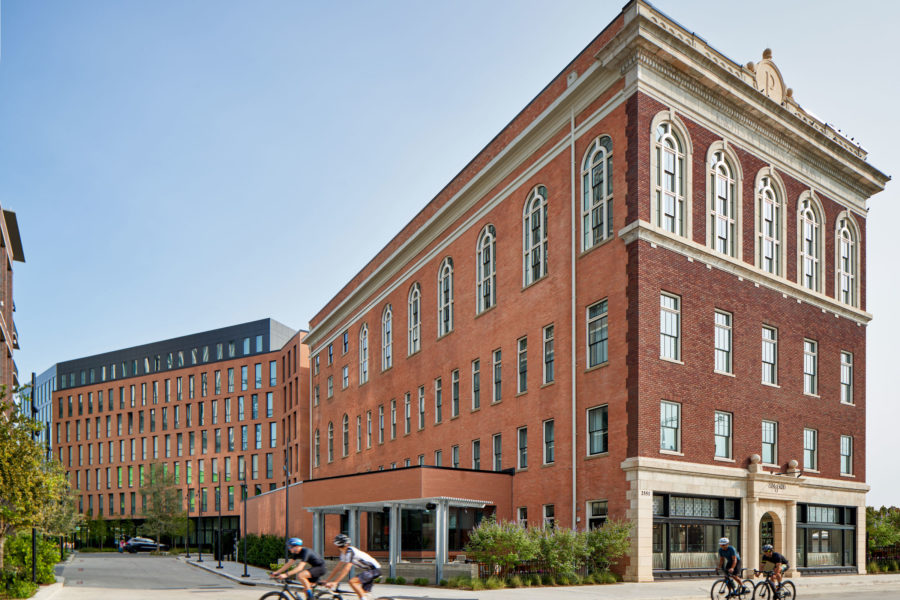
Perkins&Will renovated The Pittman Hotel in Dallas using brick in a clean and modern way. “This is an area with a lot of beautiful historic architecture,” Ting says. Photo by Leonid Furmansky
Brick acts as a good thermal barrier for projects in the South; temperatures can often reach into the 100s in Dallas. “It’s a high-performance product because of the thermal lag,” McCarthy says. “Brick has been proven to maintain and accept the heat from the outside and store it within that brick unit. It doesn’t transfer through the wall quite like other products would. That thermal mass creates thermal lag, which helps stop the heat pressing through a wall system.”
Dickinson says brick is one of the higher performance materials they use. “We’re not running into issues with thermal bridging, which becomes a concern when dealing with metal like steel and aluminum,” she says. Brick can also help earn higher energy ratings through LEED.
There’s also less waste with brick, as it is made to a uniform size and can be cleaned and reused if desired or crushed and used in applications like road base or landscaping. “Brick is one of the few materials that building codes allow to be reused in the building application, if it meets ASTM standards,” McCarthy says.
Generally speaking, brick comes from some of earth’s most abundant natural materials—clay and shale, McCarthy says. Dickinson says using a local material also keeps local people working and reduces the carbon footprint of having to truck a material a long distance. “Comparing it to some of the other facades we might consider it’s less intense in terms of the mining and the processing.”
McCarthy says Acme is one of the only brick manufacturers to complete health product declarations, so architects can also know exactly what goes into their brick and how it’s made from an environmental standpoint.
Affordability
Brick compares well with other cladding materials on a per square foot basis, McCarthy says. “In many ways we should look at brick as an investment. You don’t have to replace brick. It’s a very protective, durable product,” he says.
That’s important because, as Perkins&Will noted, materials cost is always a concern for projects. “We’re always fighting budgets,” Dickinson says. “Brick is something that allows us to, from a budget standpoint, make pretty affordable design tweaks. You can make the aesthetic go a long way in terms of the design.”
Compared to materials like precast concrete and metal, McCarthy says brick costs significantly less, though the difference varies by market.
Overall Aesthetics
Many of the country’s most beautiful buildings are clad with fired clay brick—many of them built before the US was even an independent nation. “When you think of bricks, think of their incredible longevity, flexibility, and permanent color. Some of these buildings look just as great today as they did when they were built,” McCarthy says. “Most US state capitals are built with either brick or stone, and there’s a reason they are all still there. Brick is a timeless product that endures. The industry has done a fantastic job with new colors and textures, and we’re now pushing the boundaries of what architects want.”

